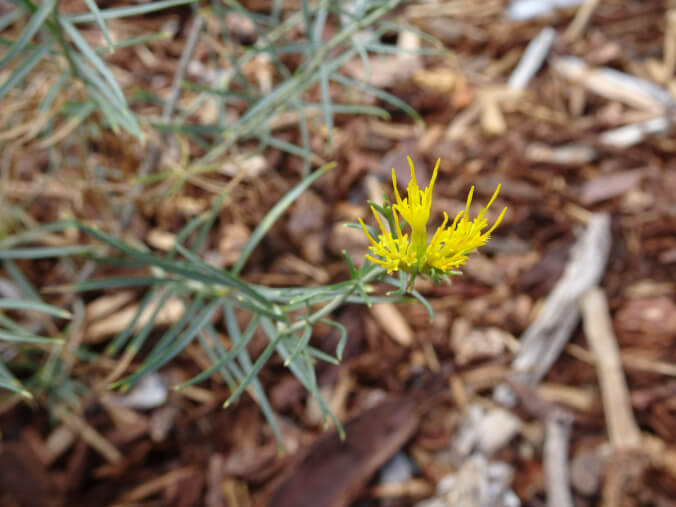by Ser Anderson, MNHC Teaching Naturalist
9-23-19
Montana Natural History Center’s Nature Adventure Garden
I wander past the other participants of this BEETLES (Better Environmental Education, Teaching, Learning & Expertise Sharing) training on Field Journaling with Students, locating their own late-blooming flowers and settling down to begin journaling, and pick the lone rabbitbrush shrub at the edge of the garden. I begin with a quick sketch of the most vibrant flowers on the rabbitbrush. Rabbitbrush is in the Aster family. It has clusters of small flowerheads at the end of many of its stems and each flowerhead has four or five ray flowers sticking up out of a cup of bracts. I choose to draw not just one flower, but one flowerhead.

I don’t journal like this on my own. I’ve been helping students journal using art, writing, and science for years as a volunteer with MNHC, encouraging them not to worry about how “good” their drawing is and just use a combination of words, pictures, and numbers to communicate as much information as possible. And I firmly believe journaling like this provides an incredible way to learn more about the world because it requires you to slow down and pay attention to details that you might miss if you only pause long enough to take a photo, like I often do.
I believe this and, still, I turn to my camera first and then to words. Never to drawing. Despite what I tell the students, I’m not a good enough artist, so I rarely try.
But I’m trying now and I’m enjoying myself. Maybe this will be the spark I need to start doing this type of journaling on my own.
We haven’t just been turned loose to find flowers and journal about them, we’ve been given a prompt, a narrower focus, and that helps. It is sometimes paralyzing to have the option to journal about anything, notice anything. Where do you even start? This exercise has us looking for an example of a flower in full bloom and then also examples of the youngest flower and the oldest flower on that same plant and, using those examples, illustrating the seasonal progression of that type of flower.
Almost all the flowers on this rabbitbrush have already bloomed and withered. There are no buds still developing and not yet opened. The youngest flowers are in the same cluster as the flowers that are in full bloom and their petals are already opening. They can’t be that far apart in age. I draw them both anyway, noting the flared petals of the flowers in full bloom and how the color of the corollas are lightening from gold to bright yellow as they get older. Then I sketch what the buds probably look like.
We only have fifteen minutes for this whole journal entry, so I quickly move on to the withering flowers in another cluster of flowers. The corolla tubes have faded from bright yellow to pale yellow and the protruding ends of the stamens or pistil have separated into golden forks resembling snake tongues.
Finally, I look at the oldest flowerheads. The bracts have turned from pale green to tan and have folded in towards each other, almost forming a pod. I pick one and carefully take it apart, pulling the bracts away to reveal the seeds inside. One light brown seed is topped by cream colored hairs and the yellow-brown flag of the withered flower, but the other four seeds have already lost their corollas and just have the pale hairs that will carry them on the wind when they are released from the flowerhead to disperse to new locations.
The fifteen minutes is up and I’m not done the way I want to be, there is more to add, of course and always, but it is kind of stunning what I’ve learned and observed in this tiny window of time. I’ve gained tools to use with my students and I’ve developed my own skills.
I could set for myself these same abbreviated work periods. I could attempt to control my tendency to use time like I have eternity and I could do this journaling again.
I think I will.
If you are interested in participating in a training like this, MNHC will be offering a series of BEETLES trainings. The next one will be on:
Making Observations
Monday, November 18th, 9:00 a.m. – 12:00 p.m.
This hands-on session will focus on the value of helping students make more accurate, detailed observations. We’ll model and practice activities that help students improve their observation skills in order to deepen their engagement, curiosity, and wonder. And in the process, we’ll learn how to make better scientific observations ourselves.
Facilitated by our very own Stephanie Laporte Potts, this educational opportunity comes straight from the playbook of BEETLES, a program of the Lawrence Hall of Science at UC Berkeley. Learn more about this session, and about BEETLES in general, here.
For more information or to sign up, email Drew at dlefebvre [at] montananaturalist [dot] org.












